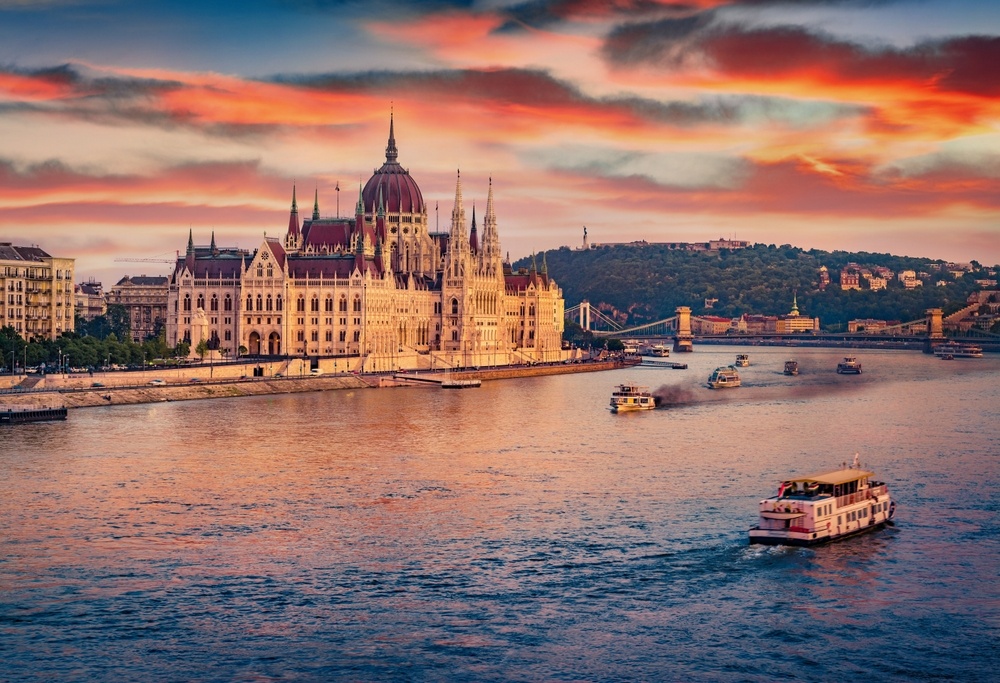
The relationship between modernity and Judaism is perhaps the central question that Jews have struggled with and debated over the past 250 years. Travelling through Central Europe, one visits the places where the leaders of two diametrically opposite sides of this debate, the Chatam Sofer, Rav Moshe Sofer and Rabbi Shamson Raphael Hirsch, who served the Jewish people with such distinction.
It is rather ironic that the Reform and Orthodox[1] movements were in full agreement that modernity and traditional Judaism could not be reconciled. Their disagreement centred around the question of what should take precedence. The Reform movement believed Judaism needed reform so that it could flourish a modern world. The Age of Enlightenment offered freedom from religious persecution and equality for the Jews, with an expectation that the Jewish people would be more open to the surrounding culture.
The Orthodox argued that even if true it would not be worth the price. Judaism is too precious to be tampered with. And even if small changes might be justified – and in the eyes of the “traditional Orthodox” they were not – they would lead to much bigger and more dangerous changes. Reforms were a distortion of Judaism and hence modernity had to be rejected.
The Chatam Sofer, in a pithy slogan – taken, out of context, from the words of the Mishna (Orlah 3:8) - argued that chadash assur min HaTorah, the new is forbidden from the Torah.
Differing with Orthodox and Reform was Shamson Raphael Hirsch who argued that Judaism and modernity could not only co-exist but would enhance each other. The founder of what is often referred to as neo-Orthodoxy took his slogan (not out of context) from the Mishna (Avot 2:2), that Yafeh Talmud Torah eem derech eretz, beautiful is Torah when joined with the ways of the world. R. Hirsch understood that for traditional Judaism to survive it would have to undergo what we might call cosmetic changes – changes that at least in the eyes of R. Hirsch did not violate halacha.
To the Hungarian traditionalists any change was anathema. In 1865 some 26 years after the death of the Chatam Sofer the following decrees were passed, forbidding one from entering a shul that that had any of the following: A rabbi who preaches in vernacular; a choir, a bimah not exactly in the middle of the shul, a rabbi who wore clerical robes, wedding ceremonies, a round sanctuary, a mechitzah where it was possible to see women. Many of these were actively promoted by R. Hirsch with great success.
The Chatam Sofer and R. Hirsch have an interesting geographical connection. The Chatam Sofer was born in Frankfurt am Main in 1762, as Moshe Schreiber, Sofer being a translation of his name. Chatam is an acronym for Chidusshei Torat Moshe, the novel insights of the teachings of Moshe[2]. While he achieved his fame in Hungary he clearly was attached to his birthplace. Though leaving at the age of 20, never to return, his responsa were consistently signed, Moshe Sofer of Frankfurt am Main.
R. Hirsch, born 46 years later (1808) in Hamburg arrived in Frankfurt am Main in 1851. Over those 90 years the decline in religious life was shocking. By the time R. Hirsch arrived there were few observant Jews. He was invited by a group of 11 shomer shabbat families who had broken away from the general community to form a separatist Orthodox community. While he is universally known as Shamson Raphael Hirsch a visit to his grave quickly reveals that Raphael Hirsch was his father’s name such that he was called to the Torah as Shamson ben Raphael Hirsch.
Before arriving at their last and most impactful locations, they both served with great distinction earlier in their career. The Chatam Sofer followed his rebbe, Rav Natan Adler, when he was appointed rabbi of Boscowitz[3], Moravia, today part of Czech Republic. The main synagogue built in the 17th century is still standing and is absolutely stunning. The walls throughout are beautifully painted with various tefilot and Biblical verses.
Rav Natan Adler was an eccentric genius who refused to commit any of his Torah thoughts to writing. He argued that as we were only granted permission to commit the Oral Law to writing lest one forget, and as he never forgot anything he had no such permission. He adopted many unusual practices, at least for his day – davening nusach Ari, duchening every day, and using the Sephardic (used today in modern Israel) method of Hebrew pronunciation. So radical were these changes and his continued refusal to follow communal norms, that they led to his ex-communication by the community of Frankfurt, lifted only on his death bed.
The Chatam Sofer was appointed rabbi of Mattesdorf in 1797 and in 1806 rabbi of Pressburg, Hungary, today Brastislava, Slovakia, where he spent the last 33 years of his life. He and his wife, who died in 1812, had no children. In 1813 he married the daughter of Rabbi Akiva Eiger, perhaps the greatest Talmudist of the era. She was 28 years his junior and together they had 11 children. Today there are many, many descendants of the Chatam Sofer, many of whom have been great rabbinic figures in their own right. With one’s students considered as if they are one’s children the Chatam Sofer had hundreds more “children”. The yeshiva he founded in Pressburg which peaked at some 500 students was not only the largest yeshiva of the day but likely the largest since the great Babylonian yeshivot of Sura and Pumpedeta. Its influence was profound, possibly as great as that of Volozhin[4].
The burial place of the Chatam Sofer is in one of the most unique cemeteries in the world. In 1942 the city built a road over the cemetery burying it underground. The Jewish community managed to save a small part of the cemetery with some 23 graves of great rabbis which are preserved underground, with panes of glass sticking above the ground on top of each of the graves.
Today the Bratislava Jewish community is led by Rabbi Baruch and Chani Myers. Rabbi Meyers, a graduate of the Juilliard School, is both rabbi of the community at large of some 500 members and together with his wife founded the Chabad centre. They have been here for 31 years, raising 13 children here. Their enthusiasm is contagious.
Before being called to Frankfurt, Rabbi Hirsch was serving as Rabbi of Nikolsburg, a community of 3,500 Jews and as Chief Rabbi of Moravia serving 50,000 Jews, a position he was appointed to in 1847 at the tender age of 39.
R. Hirsch faced opposition from many traditionalists in the community. They did not appreciate this new style rabbi who focused on teaching tehillim, the siddur and chumash as opposed to Talmud and Jewish law. He gave sermons that all could understand, introduced the notion of speaking under the chuppah, would go for walks with his wife and did not allow children under five into shul. While for the vast majority of people reading these words this sounds quite reasonable, in much of 19th century Europe this was quite radical[5].
None of this took away from his learning. The Ketav Sofer, son of the Chatam Sofer, is reported to have said that it is a good thing that people have no idea how learned R. Hirsch is; had they known they might have adopted his approach of Torah eem derech eretz.
While the shul in Nikolsburg still stands it is no more than a nice museum as there are no Jews left in Nikolsburg in what was one of the great centres of Jewish life. Rabbinic figures who served here include the Maharal of Prague, Yom-tov Lipmman Heller, Mordechai Benet, and Reb Shmelke HaLevi Horowitz of Nikolsburg.
Nikolsburg, not unlike Boscowitz, is a beautiful little town situated in the mountains with a glorious view. Walking in the footsteps of our great ancestors and looking at the landscape one exclaims ma rabu masecha Hashem, how great are Your creations, our Lord. At the same time, one is terribly saddened as one tries to comprehend the needless hatred and destruction of so many wonderful communities that existed up until the mid 20th century.
[1] We follow the consensus view of historians that Orthodoxy, no less than Reform, is a reaction to modernity. In pre-modern times we had a traditional community. The Orthodox are patterned after them but there are some fundamental differences between them. See, for example, here for further details.
[2] This is a rather ironic name and the Chatam Sofer did have many new insights in the realm of Torah.
[3] The story is told that at his bar-mitzva the Chatam Sofer quoted a piece of Torah of his great-grandfather, himself a great Torah scholar. Young Moshe went on to explain why his great-grandfather was mistaken. His father, appalled at the chutzpah of his son slapped him in the face. At that point Rav Natan Adler took him under his wing, teaching him that one who is afraid to disagree with others, who is not completely intellectually honest, cannot become a great Torah scholar. I do not know if the story is true – my guess is there has been much embellishment – but there is little doubt the Chatam Sofer was much closer to his Rebbe than to his father.
[4] The Netziv, the Rosh Yeshiva of Volozhin for the last 39 years of its existence, also wed someone much younger after his first wife passed away, marrying the daughter of R. Yechiel Michal Epstein, author of the Aruch Hashulchan, such that his brother-in-law now became his father-in-law. Batya Miriam was 36 years his junior. Their son, Rav Meir Bar-Ilan, was a great leader of the Mizrachi, founder, along with Rav Zevin, of Encyclopedia Talmudit and the one for whom the largest University in Israel is named for.
[5] As an even younger rabbi in Oldenberg, R. Hirsch did away with Kol Nidrei, fearing that non-Jews might interpret it as Jews getting out of their vows made to non-Jews. This change did not last very long and R. Hirsch never tried introducing it again.


